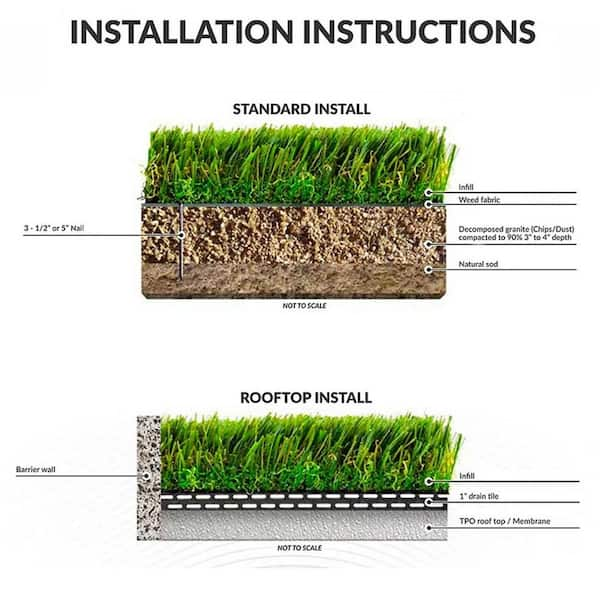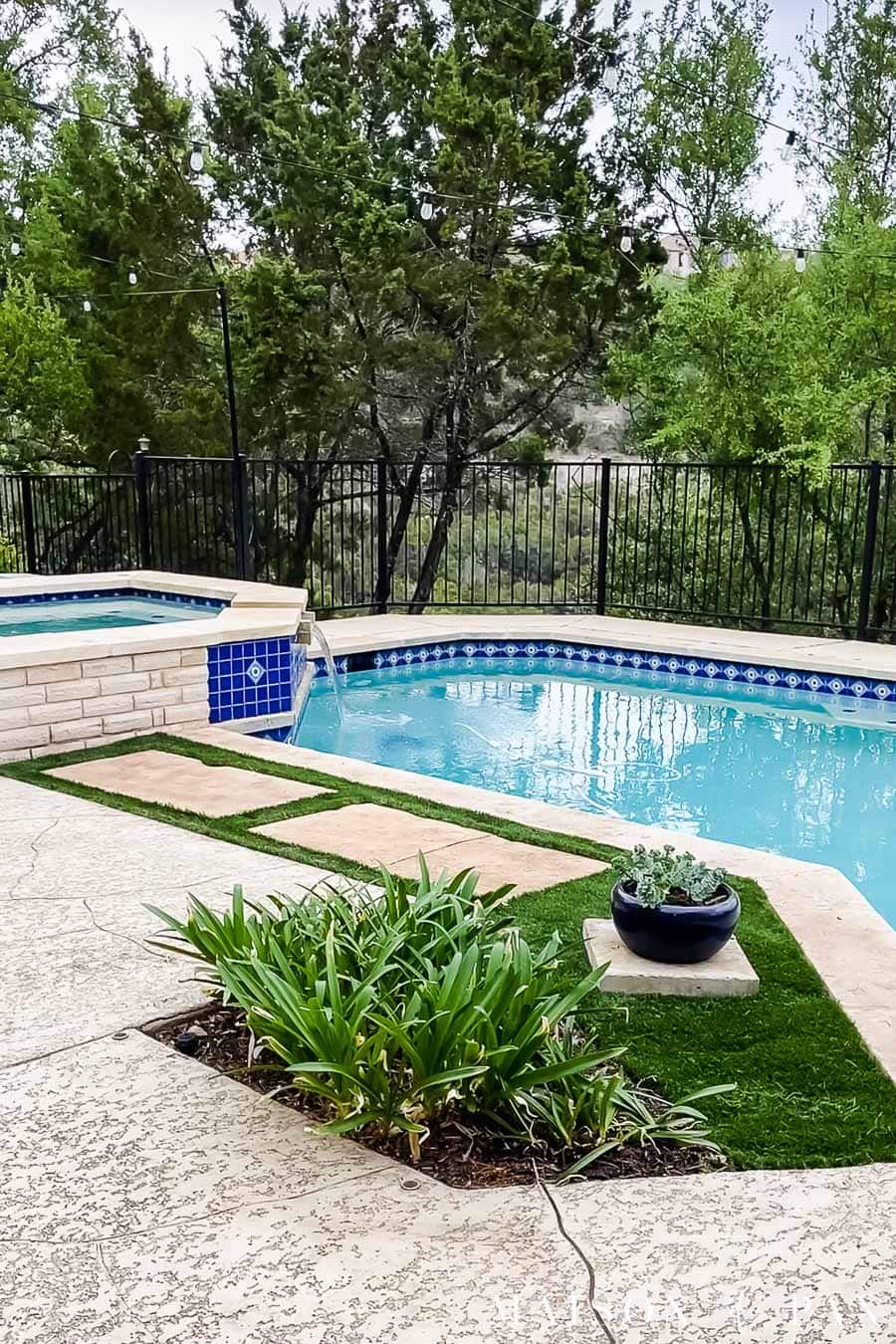Top Reasons to Consider Artificial Turf for a Low-Maintenance and lavish Backyard
As property owners significantly seek sustainable remedies for outdoor areas, artificial turf offers an appealing option to traditional yards. The benefits expand beyond mere appearances and sustainability; exploring the diverse effects of artificial turf reveals a thorough approach to yard administration that qualities much deeper consideration.
Year-Round Greenery
Among the most significant advantages of artificial grass is its capacity to provide year-round greenery, despite environment problems. Home owners frequently deal with difficulties in preserving a dynamic lawn because of seasonal adjustments, dry spells, or heavy rainfall. Artificial lawn removes these issues, ensuring a constantly rich appearance throughout the year.
This synthetic choice is crafted to stand up to varied weather scenarios, from scorching summer season warmth to freezing winter temperature levels. Unlike natural grass, which might brown or become patchy during severe conditions, artificial lawn preserves its lively color and appearance, improving the visual charm of any kind of landscape.
Additionally, fabricated lawn is resistant to parasites and diseases that generally affect all-natural lawns. This durability adds to its long-lasting charm, as there is no need for chemical treatments or plant foods that can be dangerous to the atmosphere. Home owners can delight in the aesthetic advantages of a well-maintained yard without the intermittent challenges presented by natural yard care.
Decreased Upkeep Initiatives
Synthetic yard considerably minimizes upkeep efforts, allowing house owners to delight in an excellent grass without the time-consuming tasks connected with all-natural grass care. One of the most significant advantages of synthetic turf is the elimination of routine mowing. Without any requirement for a lawnmower, homeowners save both time and the cost of maintenance related to this devices.

Cleaning artificial yard is straightforward; a basic rinse with a hose or the occasional brushing to get rid of debris is normally sufficient - backyard artificial grass. This ease of care enables homeowners to spend more time appreciating their exterior spaces instead of struggling over them. In summary, the lowered upkeep efforts connected with fabricated lawn make it an enticing choice for those seeking a lovely, convenient yard
Water Conservation Advantages
The considerable decrease in upkeep initiatives connected with fabricated grass extends to water conservation, making it an eco-friendly choice for house owners. Standard grass call for significant quantities of water to stay rich and lively, usually bring about too much water use, specifically in deserts. On the other hand, synthetic turf gets rid of the need for regular watering, significantly decreasing the overall water intake in your yard.
By choosing synthetic lawn, home owners can preserve countless gallons of water every year. This shift not just advantages private households yet additionally adds to broader environmental campaigns intended at decreasing water waste. In areas experiencing water deficiency, the adoption of artificial yard can play a considerable function in mitigating the results of drought helpful site and guaranteeing that beneficial water sources are made use of extra effectively.
Furthermore, the installment of synthetic grass can help reduced metropolitan water need, profiting the original source the neighborhood in its entirety. With expanding awareness of environmental concerns, selecting synthetic lawn acts as a proactive action towards lasting landscape design, assisting to maintain natural water resources while maintaining a visually pleasing exterior area (artificial grass installation). In summary, man-made yard provides an engaging solution for water conservation, straightening environmental obligation with modern-day landscaping requirements

Pest and Allergic Reaction Decrease
A substantial benefit of setting up synthetic turf is its ability to reduce pests and irritants in exterior areas. Conventional turf lawns often function as reproducing grounds for insects such as insects, ticks, and ants, which can develop discomfort and health risks for family members and pet dogs. In contrast, fabricated lawn eliminates the natural product that attracts these pests, therefore substantially lowering their populaces in your lawn.
Moreover, all-natural turf can harbor mold and mildew, pollen, and various other irritants, which can activate allergies and breathing concerns for sensitive people. Synthetic lawn offers a cleaner environment, minimizing the potential for allergenic responses. Unlike natural lawn, synthetic lawn does not create plant pollen, making it an outstanding alternative for allergy victims seeking to appreciate their exterior rooms without the risk of flare-ups.
Furthermore, the absence of soil in artificial grass means there is less dirt and dirt, additional decreasing airborne irritants. This low-maintenance choice not only improves the visual appeal of your lawn yet also advertises a much healthier outdoor atmosphere, permitting families to enjoy their grass without the consistent worry of allergens and insects. Therefore, fabricated turf is a calculated selection for those focusing on comfort and health and wellness in hop over to these guys their exterior home.
Long-Term Expense Financial Savings
Buying synthetic turf can result in considerable lasting price savings for property owners. While the preliminary financial investment might appear substantial, the economic advantages over time can be considerable. Synthetic turf gets rid of the requirement for routine yard upkeep costs, such as mowing, feeding, and watering. Standard grass usually call for significant sources to keep a lavish look, specifically in locations susceptible to drought or extreme climate condition.
Additionally, the durability of synthetic turf better boosts its cost-effectiveness. A lot of high-quality artificial yard products can last 15 to 25 years with marginal upkeep, decreasing the need for substitute or considerable repair services. In contrast, natural yard may require constant reseeding and routine care, which can promptly include up in costs.
Energy cost savings are another critical aspect. Property owners can expect to see reduced water bills, as artificial turf does not call for irrigation. Additionally, the decrease in lawn treatment services can release up valuable time and sources, allowing home owners to assign their spending plans somewhere else.
Conclusion
In summary, synthetic lawn offers countless advantages for property owners looking for a low-maintenance and vivid landscape. Ultimately, the long-term expense savings connected with fabricated lawn strengthen its standing as a functional and sustainable solution for enhancing exterior spaces.
Synthetic grass dramatically reduces upkeep initiatives, permitting homeowners to enjoy a beautiful lawn without the time-consuming tasks associated with all-natural yard treatment.The substantial decrease in maintenance efforts associated with artificial yard expands to water preservation, making it an ecologically pleasant option for property owners. In contrast, synthetic turf eliminates the need for normal watering, drastically reducing the total water usage in your lawn.
In areas experiencing water deficiency, the fostering of synthetic grass can play a substantial function in reducing the effects of dry spell and guaranteeing that valuable water sources are used much more successfully.
With expanding awareness of ecological problems, choosing man-made turf offers as a positive action in the direction of sustainable landscape design, helping to maintain natural water resources while preserving a cosmetically pleasing outside space.